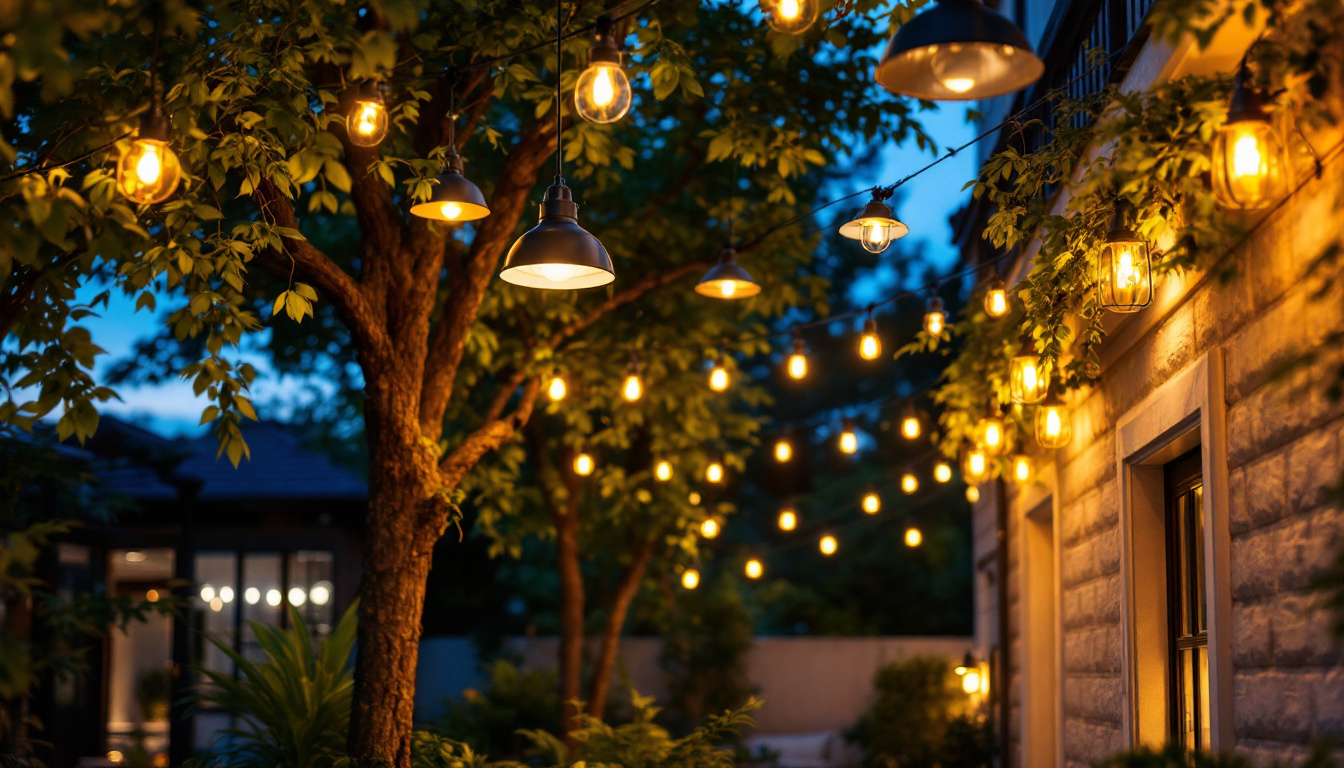
As the demand for energy-efficient and sustainable lighting solutions continues to rise, solar outdoor wall lanterns have emerged as a popular choice for both residential and commercial applications. For lighting contractors, understanding the nuances of these fixtures is essential to meet client expectations and provide high-quality installations. This article offers valuable insights and practical advice on solar outdoor wall lanterns, helping lighting contractors navigate this growing market.
Solar outdoor wall lanterns harness solar energy to provide illumination without the need for traditional electrical wiring. These fixtures typically feature solar panels, rechargeable batteries, and LED lights, making them an eco-friendly option that can significantly reduce energy costs. They are particularly appealing for homeowners looking to minimize their carbon footprint while still enjoying the beauty and functionality of outdoor lighting.
Unlike conventional lighting systems, solar lanterns operate independently of the electrical grid, which not only simplifies installation but also opens up new possibilities for lighting design in areas where access to power may be limited. This independence allows for creative installations in gardens, along pathways, or even in remote cabins, where running electrical lines would be impractical or costly.
To effectively recommend and install solar outdoor wall lanterns, lighting contractors should familiarize themselves with the key components of these fixtures. Understanding how each part functions will enable contractors to troubleshoot issues and provide better service to clients. Additionally, knowledge of these components can help contractors educate clients on the importance of maintenance and optimal placement for maximum efficiency.
There are numerous advantages to using solar outdoor wall lanterns, both for contractors and their clients. These benefits can be pivotal in persuading clients to opt for solar solutions over traditional lighting systems. The growing trend towards sustainability in home improvement projects also aligns with the increasing demand for energy-efficient products.
Furthermore, many solar outdoor wall lanterns come equipped with motion sensors or timers, adding an extra layer of functionality and security. These features not only help conserve battery life by ensuring that lights are only activated when needed but also deter potential intruders by providing illumination when movement is detected. This technological advancement further enhances the appeal of solar lanterns, making them a smart choice for modern homeowners seeking both convenience and safety in their outdoor lighting solutions.
When selecting solar outdoor wall lanterns for a project, contractors must consider several factors to ensure they meet the specific needs of their clients. The right choice can enhance the functionality and aesthetics of outdoor spaces.
Before recommending specific models, it is crucial to assess the client’s needs. Understanding their preferences regarding brightness, design, and functionality will guide the selection process. Some clients may prioritize energy efficiency, while others may focus on aesthetics or the ability to control lighting remotely.
Engaging in a thorough discussion about the desired ambiance, the purpose of the lighting, and any specific requirements will help contractors tailor their recommendations effectively.
Performance specifications are vital when choosing solar outdoor wall lanterns. Key factors to consider include:
Proper installation is crucial to maximize the performance and lifespan of solar outdoor wall lanterns. Lighting contractors should adhere to best practices to ensure successful installations.
Conducting a thorough site assessment is the first step in the installation process. Evaluating the location for sunlight exposure is essential, as the effectiveness of solar panels relies on direct sunlight. Areas with excessive shade from trees or buildings may not be suitable for solar lanterns.
Additionally, consider the height at which the lanterns will be mounted. Proper height ensures optimal light distribution and visibility while minimizing the risk of vandalism or accidental damage.
When it comes to mounting solar outdoor wall lanterns, several techniques can be employed to ensure stability and longevity. The choice of mounting method may depend on the specific design of the lantern and the surface it will be attached to.
To ensure the longevity and optimal performance of solar outdoor wall lanterns, regular maintenance is essential. Lighting contractors should educate clients on proper care and provide troubleshooting tips for common issues.
Solar panels should be kept clean to maximize their efficiency. Dust, dirt, and debris can accumulate on the surface, blocking sunlight and reducing energy absorption. Contractors should recommend periodic cleaning, especially in areas with high pollen or dust levels.
Clients can use a soft cloth or sponge with mild soap and water to gently clean the panels. It is advisable to avoid harsh chemicals that could damage the solar panel surface.
Despite their reliability, solar outdoor wall lanterns can encounter issues that may require troubleshooting. Common problems include:
In addition to functionality, the design of solar outdoor wall lanterns plays a significant role in enhancing outdoor aesthetics. Lighting contractors should consider various design elements to ensure that the lanterns complement the overall landscape.
Solar lanterns come in a variety of styles, from traditional to modern designs. Contractors should work closely with clients to select lanterns that align with their architectural style and personal preferences. The right choice can enhance curb appeal and contribute to the overall ambiance of outdoor spaces.
Considerations such as color, material, and shape can significantly impact the visual appeal. For example, wrought iron lanterns may suit a classic home, while sleek, minimalist designs may be more appropriate for contemporary settings.
The lighting effect produced by solar outdoor wall lanterns can vary based on their design and placement. Contractors should discuss the desired lighting effects with clients, such as soft ambient lighting for relaxation areas or brighter lights for security purposes.
Utilizing multiple lanterns in a coordinated layout can create dynamic lighting effects, enhancing the visual interest of outdoor spaces. Contractors should explore creative arrangements that highlight architectural features or landscaping elements.
Solar outdoor wall lanterns present a unique opportunity for lighting contractors to offer sustainable and energy-efficient solutions to their clients. By understanding the components, benefits, and installation best practices associated with these fixtures, contractors can enhance their service offerings and ensure client satisfaction.
As the market for solar lighting continues to grow, staying informed about the latest technologies and trends will be essential for contractors aiming to remain competitive. By focusing on quality installations, effective maintenance, and thoughtful design, lighting contractors can position themselves as trusted experts in the field of solar outdoor lighting.
Ready to elevate your lighting installations with the best in solar outdoor wall lanterns? At LumenWholesale, we provide lighting contractors like you with the highest quality, spec-grade lighting products at prices that simply can’t be beaten. Say goodbye to local distributor markups and hello to our extensive selection that meets rigorous industry standards. With free shipping on bulk orders, you can stock up on reliable, high-performance lighting solutions that will impress your clients and enhance every project. Don’t settle for less—choose LumenWholesale for Wholesale Lighting at the Best Value and make the smart switch to superior lighting today.

Discover the transformative benefits of outdoor overhead lighting fixtures for lighting contractors.

Discover the top brands revolutionizing the LED strip light industry with unmatched reliability.

Discover how understanding lamp ballasts can revolutionize your lighting projects.

Discover how expert lighting contractors transform breweries into captivating visual experiences.